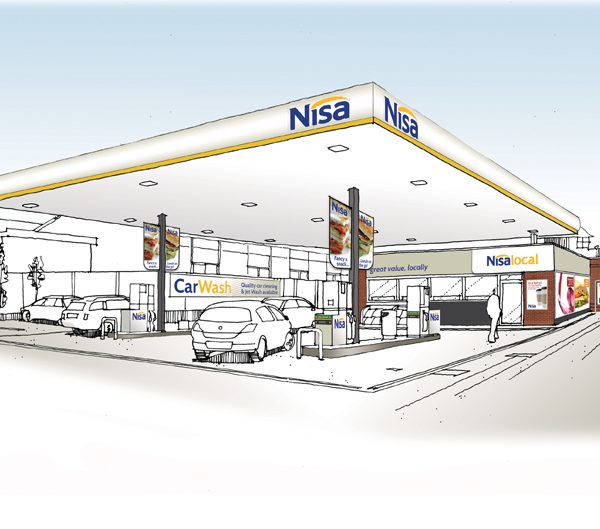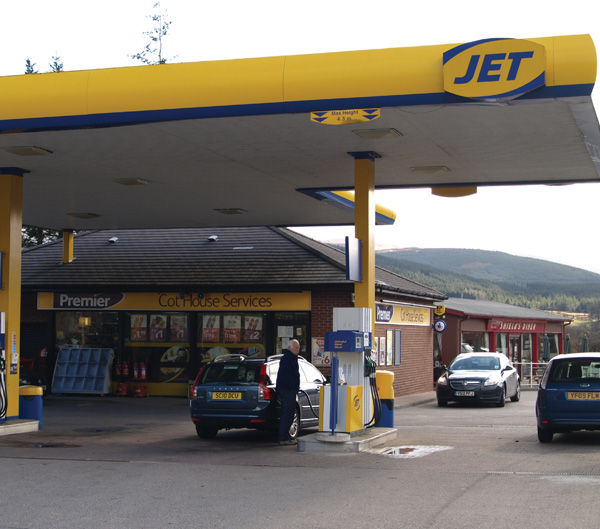With aggressive competition from supermarkets, forecourt convenience stores must tap into consumers trends and work closely with suppliers to ensure they retain customers and win new ones.
by Kevin Scott
Life has not been easy for forecourt retailers over recent years. Competition from supermarkets is fierce and even if discount per litre deals don’t actually change much in cash terms, all too often they make the difference between an indie losing a sale or gaining one.
It is an environment in which independent retailers can still thrive. A continually innovative example of this is Walter Bryson from Londis in Prestwick. Winner of Scottish Local Retailer of the Year in 2011, Walter’s store is a fine example of a c-store, but it also happens to do well from fuel sales. It’s not an easy market though, as Walter explains.
“Certainly, the convenience side of the business does very well. The hard part is making money from fuel as it’s so difficult to compete with the supermarkets. It’s now becoming nothing more than a footfall driver for the c-store. Fuel and duty is such a big element of pricing. It’s made it so expensive that people now shop around. If it was cheaper I’d likely be doing better as people wouldn’t be as price conscious.”
Recently the RMI Petrol Retailers Association (PRA), condemned the controversial decision by the OFT to not proceed with a full Market Study into the UK retail fuels sector. Brian Madderson, PRA Chairman said “This was a prime opportunity, supported by considerable new information from our retailers, to tackle market manipulation of UK wholesale prices and retail prices by the big players. This comes at a time when refineries have over-supply and demand has slumped due to the Arctic weather, yet the wholesale cost of petrol has increased by over 7.00ppl since Christmas.”
According to the PRA – whose reach does not stretch into Scotland (where the Scottish Motor Trade Association assume responsibility for the motor trade), every new supermarket filling station, now often unmanned, destroys up to five independent forecourt businesses. A recent PRA report commissioned from Christie + Co confirmed that as many as a further 1,000 independent forecourt sites will be wiped out by new supermarket forecourts by 2017 unless the Government takes action.
Madderson continued “The establishment has once again turned a blind eye to the need for a full Market Study which would have unmasked the market manipulators, provided proper transparency and helped our economic recovery.”
Walter Bryson comments: “The OFT says it can’t see anything wrong with the way the market operates, but if you speak to any independent the chances are they will argue that there are occasions where it would seem supermarkets are loss leading.”
Nisa goes its own way
One symbol group fully committed to fuel retailing is Nisa and the firm is set to become the first symbol group in the UK to have its own brand fuel offering after it reached an agreement with Greenergy.
As reported in our news section, the partnership will allow Nisa to provide its members a transparent, competitive fuel offer which allows them to compete in a very price conscious marketplace. With Greenergy, Nisa is now able to offer its members a fuel supply under a number of brands – including Nisa and Loco.
The company has explained the thinking behind the move, saying that it will help to build brand awareness in a sector where previously Nisa wasn’t well represented. And if you’re not that sure who Greenergy are, the credentials are comprehensive – the group currently supplies over 10 billion litres of petrol, diesel and biofuel annually.
Nisa recently undertook research on understanding the forecourt consumer and shopper missions they make and has updated its offer to reflect the specialist and differing shoppers in forecourt stores. The research found that there is not a one size fits all approach when it comes to forecourts and that each store needs to be tailored to suit shopper needs. It also highlighted three clear segments within the forecourt market – Transient, Convenience and Essentials. Transient shoppers visit purely to stock up on fuel and food to go, convenience shoppers use the store as a convenience store first and foremost that sells fuel and essentials shoppers visit the forecourt for both fuel and a convenience store. Raj Krishan says: “Each of these segments has a different consumer base and therefore retailers should adjust their offer to match this.”
He adds that each store should accommodate different types of shoppers, ensuring that those who want to make an impulse purchase whilst paying for fuel can do so at ease whilst those wanting to complete a larger shop are able to do so.
So the key for forecourt retailers in the modern convenience landscape is to provide a good fuel offering at the best price they can while ensuring their shop attracts as much footfall as possible for both fuel and non-fuel customers.
Remote system could save costs
A remote wetstock management system which uses ‘real-time data’ is being touted as the answer to saving money on maintenance, reducing fuel losses and lowering risk for forecourt retailers. The system, which is provided by Fairbanks could see retailers improve their tightly squeezed profit margins. Fairbanks’ system is powered by an intelligent fuel control system that gives visibility of your product – from the fuel terminal to the customers vehicle.
The company says that an investigation to identify the source of loss on a forecourt traditionally involves extensive line and tank testing, dispenser isolation and costly maintenance call-outs. But, says the firm, if you eliminate the mystery behind the source of the loss, you will reduce the cost and inconvenience created by finding it.
Fairbanks’ claims that the real-time service will identify the source of a loss in a matter of days rather than months. By monitoring fuel movement across the entire site via its “ibank” data collection device, their specially trained data analysts can quickly pin point the source of the loss and then work with the retailer to achieve a positive solution.






